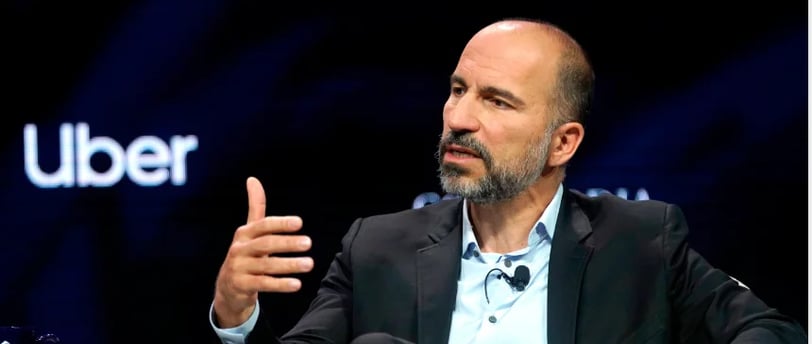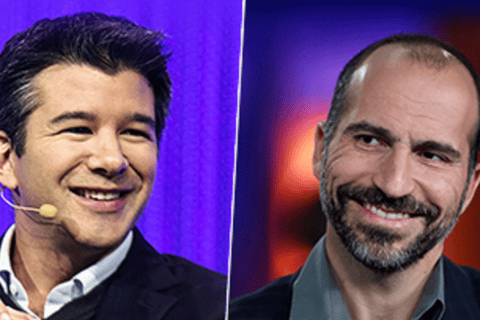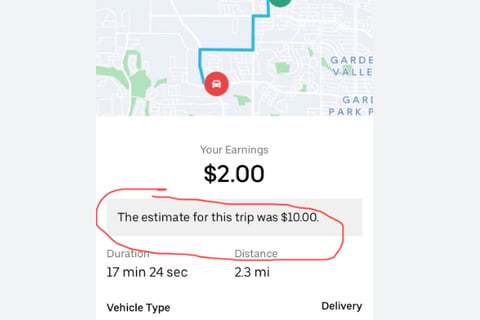Uber's Tip-Stealing Scandal: Drivers vs Shareholders
Dive into the ongoing controversies surrounding Uber's treatment of its drivers, including the notorious tip-stealing scandal and the decline in driver earnings.
9/5/2024


Uber, once seen as a lifeline for many gig workers, has been embroiled in controversies that have left both riders and drivers frustrated. From deceiving riders about gratuities to lowering driver earnings, the rideshare giant has faced a steady stream of criticism. The class action lawsuit in 2019 revealed Uber’s gratuity theft, where the company took a cut from tips that were supposed to go to drivers. But that wasn’t the end of Uber’s challenges, and in recent years, drivers have continued to suffer while Uber’s leadership changes seem more focused on pleasing shareholders than ensuring the well-being of the drivers who keep the business running.
Uber's Tip-Stealing Allegations: Shaving 40% of Tips
In 2014, a class action lawsuit was filed against Uber by riders who felt deceived. The case, which centered around Uber’s practice of taking up to 40% of the 20% gratuity riders added to fares, revealed a troubling pattern of dishonesty. Riders were told that 100% of their tips would go to drivers, only to find out later that the company was pocketing a significant portion.
Uber eventually settled, paying back over $300,000 to riders who had been deceived and covering $400,000 in attorneys' fees. However, this settlement didn’t return the stolen tips to the drivers who had worked for those gratuities. Instead, the company refunded riders, leaving drivers out in the cold. While Uber’s then-CEO Travis Kalanick was at the helm during this scandal, it’s clear that the company’s leadership has continued to prioritize profits over its drivers.
The Decline in Earnings: Bait and Switch?
Over the years, Uber has built a reputation for offering lucrative fares to lure drivers in, but for many, this opportunity became a bait-and-switch tactic. In the early days, drivers could earn a decent living through Uber. Many even quit their full-time jobs, turning to Uber as a reliable source of income. But those good times didn’t last. As Uber grew, fares were lowered, driver payouts shrank, and the once-promised rewards became harder to come by.
For the drivers who depend on Uber for their livelihood, the company’s decision to cut fares while increasing its take from each ride feels like betrayal. The worst part? There’s no clear recourse. Drivers are left with two choices: adapt to lower earnings or leave the platform entirely. Many have chosen the latter, opting to drive for competitors like Lyft or trying out niche platforms such as HopSkipDrive, where earnings are more consistent.
CEO Shuffling: Is It a "Them or Me" Situation?
Uber has experienced significant leadership changes since its founding, with three different CEOs in less than a decade. The company’s controversial founder, Travis Kalanick, was ousted in 2017 after a string of scandals, including the gratuity theft. He was replaced by Dara Khosrowshahi, who has tried to repair the company’s public image but has faced his own struggles.
Khosrowshahi has been under intense pressure to keep Uber profitable and keep shareholders happy, but this has often come at the expense of drivers. Uber’s initial public offering (IPO) in 2019 was highly anticipated, but its stock performance has been shaky. Shareholders expect higher returns, and Khosrowshahi has been forced to make decisions that prioritize corporate profits over the well-being of the company’s most essential workforce: the drivers.
The question many are asking is whether Khosrowshahi is sacrificing driver welfare to keep the shareholders—and his job—secure. In an “either them or me” situation, it seems like Uber’s leadership has chosen to please investors, even if it means leaving drivers behind. The long-term sustainability of this strategy is questionable, as frustrated drivers continue to leave the platform, and competitors that treat their workers better are gaining ground.
Uber’s Future: Will the Drivers Continue to Suffer?
With Uber’s frequent CEO changes and ongoing pressure to appease shareholders, it’s difficult to see how the company can continue operating without making major changes to how it treats its drivers. Lower fares, shrinking payouts, and the tip-stealing scandal have eroded driver trust. Many gig workers are now looking elsewhere for more stable, fair work opportunities.
For Uber, the question remains: can the company survive if it keeps alienating the very people who provide its services? Or will it finally make the shift to prioritize its drivers before it’s too late?
The rideshare giant is at a crossroads, and unless there’s a fundamental change in leadership priorities, it’s hard to imagine how Uber can maintain the support of the drivers who have made the company what it is today.
Read more:
🚨 Coinbase Giveaway! Get your free $86 before it ends in September 2024!



